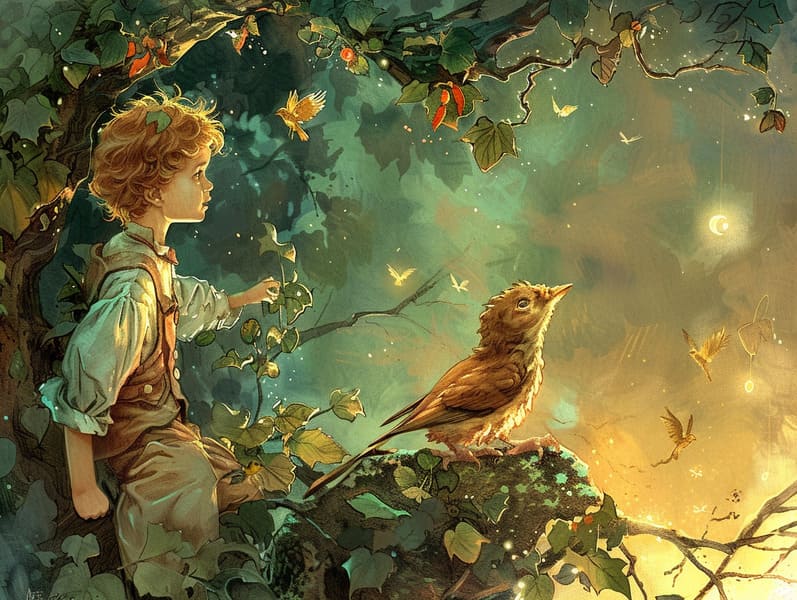
Popular fairy tales have long histories. These tales have been whispered from one generation to the next well before they were ever transcribed. They arose from a variety of traditions, including Indigenous traditions. They were initially conveyed among mature audiences, often carrying themes and messages reflective of the societal norms and beliefs of the time.
The famous Grimm duo, Jacob and Wilhelm (the Grimm brothers), were among the first to gather and publish many of these beloved stories. Their volume, "Grimm's Folk Tales," included stories like "The Little Glass Slipper," "Little Brother and Little Sister," and "The True Story of Snow White," which have since become mainstays in the world of classic fairy tales. Similarly, Hans Andersen's charming stories, such as "The Mermaid's Tale," and "The Duckling that Could," have floated into hearts worldwide, guaranteeing their place in the pantheon of timeless fairy tales.
Despite their age, these tales remain as relevant as ever, especially as nighttime stories for kids. These magical stories are now available in numerous formats, including richly illustrated books, charming animations, and free fairy tales online.
Their continued relevance can be linked to several whimsical characteristics:
Life Lessons: Old fairy tales often convey important moral lessons. Stories like "The Shepherd Boy and the Wolf" teach the value of sincerity, while "The Tortoise and the Hare" exemplify the qualities of steadfastness and humility. These narratives offer children clear distinctions between correct and incorrect, helping to shape their moral compass in a gentle yet deep way.
Kindness and Comprehension: Ancient fairy tales frequently illustrate individuals facing challenges and struggles, urging audiences to connect with their struggles and celebrate their triumphs. For instance, "The Tale of Beauty and the Beast" teaches us the merit of valuing inner qualities to acknowledge the true character of a soul, encouraging empathy and understanding.
Cultural Understanding: Many ancient fairy tales are deeply ingrained in the cultural contexts from which they originated. Learning from these tales can provide informative snapshots into different heritages, fostering a sense of world awareness and comprehension.
Imagination and Creativity: The extraordinary elements in classic fairy tales—talking animals—encourage children’s creative thoughts. These stories bring readers to imaginary realms, stimulating innovative ideas and a sense of excitement that remains a lifetime.
Classic fairy tales are not only captivating but also educational. They work as captivating tools in advancing various cognitive and affective skills in the young. When timeless fairy tales are spoken out loud, they boost language development by teaching new lexicon and detailed sentence structures. This practice also boosts auditory perception and concentration, as children focus on every detail, looking forward to see what happens next.
Furthermore, exploring the themes and characters of old fairy tales can strengthen thinking skills and intellectual skills. Children are instructed to notice patterns, anticipate outcomes, awesome site and catch on to cause and effect. These examinations also further children say their thoughts and feelings, fostering their emotional intelligence.
In today’s information age, the presence of digital storybooks has made these tales more available than ever. Internet sites and online apps share extensive collections of timeless fairy tales that can be seen or listened on anytime, anywhere. Fairy tales read out loud are particularly sought after, presenting an interactive way for young readers to relish these enchanting tales. Spoken stories and read-out-loud stories take characters and settings to life, often complemented by spellbinding melodies and harmonies that enhance the tale experience.
The persistent attraction of timeless fairy tales lies in their ability to shift to present days while continuing with their underlying messages. Contemporary retellings of these tales often highlight more varied characters and modern settings, making them pertinent to today’s audience. However, the central morals of valour, kindheartedness, and equity remain unchanged, continuing to impact readers of all ages.
Old fairy tales also offer a sense of calm and closeness. They render accessible a ordered narrative with a obvious beginning, middle, and end, often concluding with the wrap-up of conflicts and the triumph of virtue over wickedness. This consistency can be solacing for the young, offering a sense of dependability in an unpredictable world.
Old fairy tales continue to mesmerize and enlighten new generations, maintaining their allure and impact in modern society. As nighttime stories for kids, they furnish a perfect blend of fantasy and learning, cultivating moral values, empathy, and creativity. The prevalence of online fairy tales and the well-liked nature of fairy tales recited confirm that these ancient stories remain acquirable to new generations.
By defending and sharing these fairy tales, we continue to treasure the rich tapestry of creativity and cultural heritage. Whether you are enjoying a colorful picture book, seeing a electronic library, or listening to an audiobook, the beauty of bedtime fairy tales is always within reach. These narratives demonstrate of the lasting nature of fairy tales and its ability to join us across centuries and lands.
Regardless if you are accessing a artistically illustrated book, enjoying a online library, or listening via an narrated book, the splendor of famous fairy tales is always within reach.
These narratives remind us of the unending nature of tales and its ability to bond us across epochs and places, establishing a link that fascinates and enlightens alike.
Comments on “Understanding the Legacy of Ancient Fairy Tales with Its Ageless Splendor.”